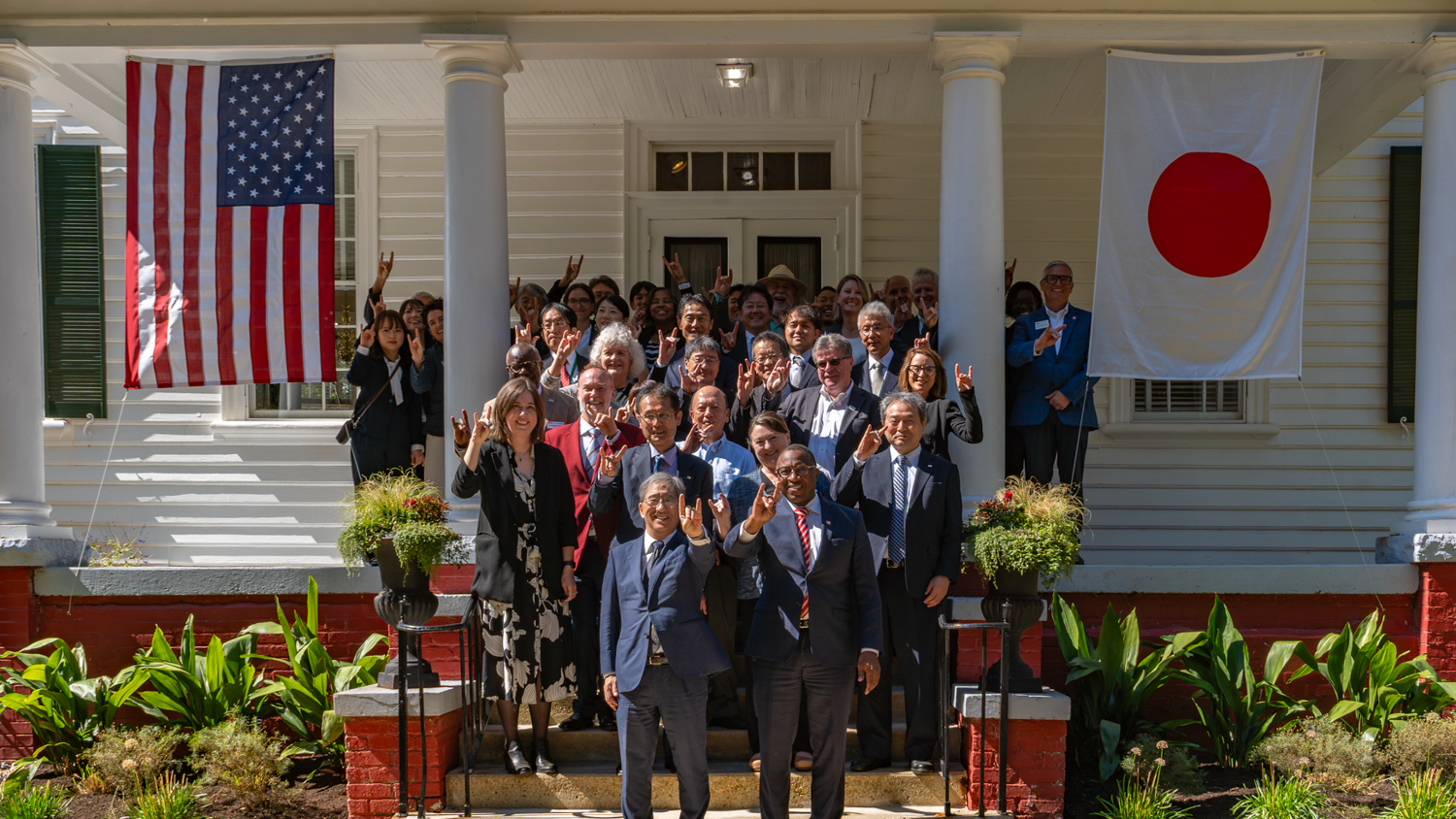Connecting the Local to the Global – Art Nouveau Visionary Alphonse Mucha
Chocolate and champagne, travel to sundrenched Monaco, rousing theatrical performances by the internationally acclaimed actress Sarah Bernhardt, these are but a few of the products, places, and performers depicted in posters by Czech artist Alphonse Mucha. Best known for blanketing the walls of Paris with his posters at the end of the nineteenth century, Mucha’s style of swirling lines of flowers and birds and beautiful, long-tressed damsels have been synonymous with Belle Epoque France. What a beautiful epoch it must have been. The North Carolina Museum of Art’s current temporary exhibition Alphonse Mucha: Art Nouveau Visionary reveals Mucha to have been so much more.
Touring the Exhibition
On October 20, November 12, and November 19, more than 50 undergraduate and graduate students affiliated with the departments of Art Studies, Foreign Languages and Literatures, and History, the School of Design, and the NC State European Center in Prague went behind the scenes to tour the exhibition. Leading these tours were NCMA Associate Curator of European paintings and sculptures Michele Frederick, Marcus Mucha (the artist’s great-grandson and Mucha Trust board member, 10/20/2021), and Dr. Alexis Clark (Teaching Assistant Professor in the History of Art).
On these tours, students had the opportunity to survey brightly colored and impeccably preserved examples of Mucha’s art. Students learned about the artist’s importance in developing integrated branding, in which product designs match their representation in promotional materials, and in pioneering marketing aimed at women consumers. Perfume vials match posters modeling how to spritz that scent using a new applicator; the women nibbling gaufrettes painted on biscuit tins refer to ads for those same sweet treats. The NCMA exhibition highlighted Mucha’s sculptural works, for instance his collaborations with jeweler Georges Fouquet and his close friendship with Auguste Rodin.
Mucha in His Own Time
At times, Mucha’s art intersected with late-nineteenth and early-twentieth century politics. In his posters, women revel in smoking and bicycling, alluding to the New Woman who broke with tradition-bound mores. When his country was part of the Austro-Hungarian Empire, steeped in his Moravian and Czech identities, Mucha also looked to cultivate national pride. He ultimately returned to Czechoslovakia, creating The Slav Epic that narrated important moments in the history of the Slav people. The NCMA has captured this cycle of 20 monumental canvases in all their rich detail through a film shown as part of the exhibition.
Due to the incredible lithographs produced by artists such as Mucha, affichomania (“poster mania”) seized late-nineteenth century Paris. Collectors scrambled to pry the latest posters from public walls to decorate their apartments. But the posters and objects presented by the NCMA are pristine, thanks to the work of the Mucha family and now Foundation. For decades through Nazi and then Soviet occupation of the Czech, the family preserved these artworks and objects. Their care shines throughout the exhibition.
Collaborating with the NC European Center in Prague
Taking students to museums and exhibitions like Alphonse Mucha: Art Nouveau Visionary encourages students to put their knowledge of art history into practice. Whenever possible, Dr. Clark seeks to connect her classes to the world outside the brick-and-mortar classroom. Next semester, her students will virtually meet curators and museum professionals from around the world, enabling them to start to build their own professional networks as they learn about Impressionism.
To further connect the local NC State campus to the global community, the NC European Center in Prague plans to coordinate a talk by Marcus Mucha and virtual tour of the NCMA exhibition in early 2022. Alphonse Mucha: Art Nouveau Visionary closes at the North Carolina Museum of Art on January 23, 2022.
This article was written by Alexis Clark, Ph.D. Dr. Clark is a Teaching Assistant Professor in Art History, Department of History.


